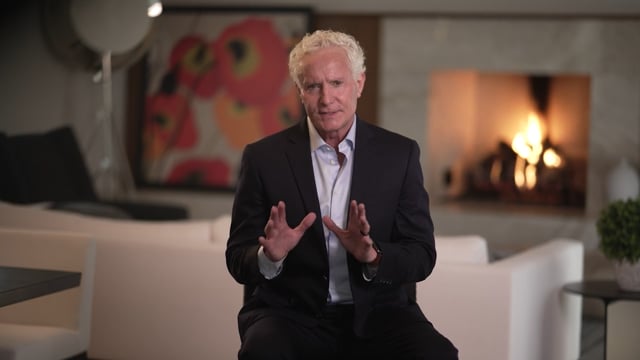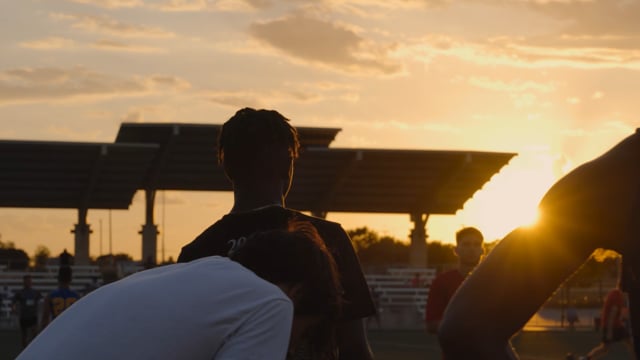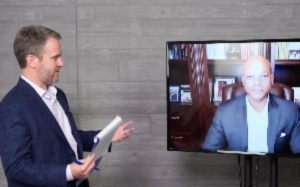
A Comprehensive Guide for Broadcasting to Internet Viewers and Boosting Your Business
Did you know that you use video streaming technology every time you watch video content online? However, live streaming technology involves watching online content in real-time while it’s being recorded.
You can compare live streams to live television broadcasts, such as sports and the news.
However, live streaming has an added advantage over live broadcasting because it’s much more accessible. It’s something that all businesses can use to their advantage – but how does live streaming work?
You can establish a strong connection with your audience by using live video content, which may retain their attention up to 20 times longer than on-demand video.
Producing live content for your company makes sense because live streaming has various applications across many industries.
The experts at Mosaic Media Films know exactly how to use live-streaming technology and can help you improve your business with this helpful tool.
If you want to know what live streaming is and how to use it to benefit your business, you’re in the right place.
What Is Live Streaming and How Does it Work?
What Is Live Streaming?
First things first, what is live streaming? What does streaming live mean? It involves presenting real-time videos to your audience.
Previously, only media outlets with the technology to transmit live to their audiences could use live streaming technology.
However, it has taken over the internet in recent years. An increasing number of people are producing and watching these live experiences from the comfort of their homes, eliminating the need for video production costs and costly TV studio.
Contrary to traditional broadcasting, live streaming allows the audience to participate. Viewers can like, share, comment, and even be invited to join the stream.
Because of its power and personalization, people enjoy the close-knit atmosphere of real-time streaming, faults, and all. In reality, the minor pauses and mistakes add to its uniqueness.
Live streaming gives you the impression that you are closer to the audience or host, which is something you can’t achieve from a polished, pre-recorded video.
How Does Live Streaming Work?
Now that you know what it is, how does live stream work?
Live streaming makes use of various technical processes, such as:
- Segmentation
- Encoding and compression
- Content delivery network (CDN) distribution
- CDN caching
- Video playback
- Decoding
The first stage in streaming is video capture. Your camera records images that are stored as digital data.
Segmentation
Segmentation makes live streaming possible. It allows you to send video data by dividing it into smaller segments.
Encoding and Compressing
Encoding and compression allow you to remove irrelevant visual information from your video files.
The process involves converting data into a format all devices can understand during encoding.
There are four encoding standards: AV1, VP9, H.264, and H.265.
CDN Distribution and CDN Caching
After the live stream has been segmented, compressed, and encoded, CDN distribution and caching ensure that the intended audience can access it.
A CDN’s primary function is to make content available to viewers worldwide.
Since viewers don’t have to access the original server, CDN enables quicker live video streaming performance. However, the nearby CDN server handles every request.
The ability of CDN to cache the segments allows people to join the live broadcast from the CDN cache rather than the originating server, which is another advantage.
If you want to speed up and streamline your live stream delivery, you need a high-quality CDN.
Video Playback and Decoding
Lastly, the encoded video is uncompressed by the video decoder so it may be played back.
This is the final step in interpreting the content before it is played.
What Is Live Streaming Technology?
 Now that you know what live streaming is, what is live streaming technology? The hardware and software transfer the real-time content to the intended audience.
Now that you know what live streaming is, what is live streaming technology? The hardware and software transfer the real-time content to the intended audience.
Transmitting live content is quite challenging since video files are large. Therefore, you need specific streaming devices and technology for the process.
Some examples of live-streaming technology include:
- Video transcoders
- Video encoders
- HTML5 video player
- Content Delivery Network (CDN)
What Is an Example of Live Streaming?
 There are so many different examples of live streams, but here are a few of the most popular ones:
There are so many different examples of live streams, but here are a few of the most popular ones:
- Young people are going live on Instagram.
- A musician is going live on TikTok to host a mini-show for their audience.
- A recruiter is interviewing a potential candidate on LinkedIn for a vacant job position.
The most popular live-streaming platforms are Instagram Live, TikTok, Facebook Live, Twitch TV, and House Party. You can use these apps to live stream various types of content.
Uses of Live Streams
There are numerous uses for live streaming across various industries. Fundamentally, streaming material aims to enable viewers to participate in activities they would otherwise be unable to do in person.
Live streaming is a tool used by companies and other organizations to interact with their audiences. It enables more people to attend live events regardless of where they are.
 The following are some of the most common use cases for live streaming:
The following are some of the most common use cases for live streaming:
- Marketing
- Virtual events
- Concert streaming
- Online Education
- Sports coverage
- Local government streaming
- Church service streaming
- Video sales
 What Is the Point of Live Streaming?
What Is the Point of Live Streaming?
Live streamers can profit from this technology on various levels, whether influencers or small business owners trying to promote goods or services.
Recently, universities also started using live streaming to deliver online lectures, while media outlets use it to broadcast important news.
Live streaming offers numerous benefits. Here are a few of them:
 You Can Reach a Wider Audience
You Can Reach a Wider Audience
If you want to host an event, you cannot invite more guests than the location can hold.
However, you can communicate with as many people as possible with live streams. All you have to do is share the video streaming link with the intended audience.
Additionally, people worldwide can access your live stream from the comfort of their homes.
A Live Stream Is Inexpensive
While there are premium live-streaming services you have to pay for, a free one is more than enough.
There are no further fees associated with free live streaming other than the camera and any additional equipment you might need.
It Is Easier to Set Up and Use
It’s a common misconception that live streaming is challenging or that you must be tech-savvy to succeed.
The majority of social media sites have live-streaming capabilities. Choose the right streaming platform depending on the audience you want to reach.
Your choice of platform will probably also be influenced by the objective of your broadcast. Many people are already doing it, and some are making money.
All you need is a streaming service and a strong internet connection.
Live Streaming Isn’t Limited to Video and Audio
Users who want to include images, text, or live chat can do so.
Are There Any Risks Associated with Live Streaming?
Yes, there are potential risks you need to watch out for. Since a live stream takes place in real-time, you can’t edit it. Therefore, you run the risk of being exposed to inappropriate material. This mainly applies to children.
From the perspective of the host, they run the risk of being exposed to offensive comments.
Many internet users, particularly young people, often fail to consider the digital footprint they are leaving behind. Remember that viewers can record and share a live stream on the internet when you are hosting one.
People occasionally say or do things during a live stream that they typically wouldn’t, so they could be subjected to blackmail or bullying because of the recorded content.
This is why you need to think carefully and plan your live streams, which is something Mosaic Media Films can help with.
 What Is the Difference Between Streaming and Live Streaming?
What Is the Difference Between Streaming and Live Streaming?
Live streaming is similar to streaming, except the end user receives and views multimedia content in real time without any noticeable time gap or delay.
This means the content is played as it comes online.
Regular streaming processes and presents a continuous stream of data. This is done through streaming media sites like YouTube, Netflix, and Hulu. Regular streaming involves downloading a pre-recorded, static video file onto the system that the media server has access.
Unlike video on demand, live streaming provides a different set of challenges.
Contact Mosaic Media Films for All Your Live Streaming Needs!
Live streaming is a powerful tool for universities, businesses, and other professional associations.
By producing incredibly engaging content, brands can communicate with their audiences in real-time. To take it a step further, you can also host virtual events.
Video streaming helps people and businesses connect naturally with their followers and reach a larger audience. Many individuals choose to watch live streaming rather than read blogs.
It’s a fantastic way to engage your audience with fresh and original content and can support the development of your trust and credibility with potential clients.
You should start incorporating live streaming into your marketing campaign to take your business to the next level.
Fortunately, Mosaic Media Films is here to help. We can steer you in the right direction so that you can leverage live streaming for your business.
Here's how we do it
Free Strategy Session
Produce Your Video
Achieve Your Goal
So, schedule your free strategy session now. Don’t let the fear of a complicated process stop you from telling your incredible story to the world.
Recent Posts

Mark Wonderlin is the visionary founder of Mosaic Media Films. He is passionate about crafting creative business videos that captivate and convert. Mark and his team stand out by creating visually stunning videos and ensuring they align seamlessly with the client’s broader marketing objectives.

